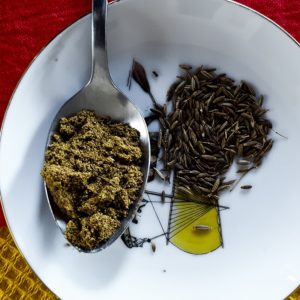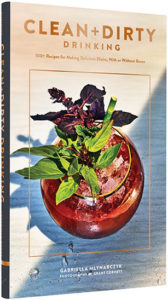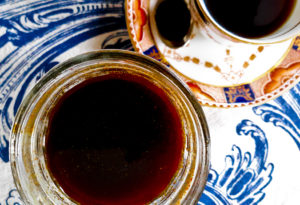Find coriander seed in masala, harissa, dukkha spice blends, because it tastes good with cinnamon, cloves, cumin, ginger and nutmeg. Coriander and cumin are found together in cooking, in blends and mixtures, though coriander is less well known than cumin.
|
|
 |
Coriander (Coriandrum sativum) is the seed of an annual green plant, and has a marvelous warm-ish spicy-nutty flavor. Medicinally it’s quieting to the nervous system and the stomach, and has been used in Western herbalism for respiratory ailments and Unani-Tibb, or Middle-Eastern traditional medicine, for nervous disorders. Seeds can be chewed to refresh the breath.
Coriander is one of the spices that Divya Alter’s recipe for Almond Milk Chai calls for, if your digestion is too hot. You can see more on her cookbook, here. She says you can mitigate the heating effects of ginger and black pepper with coriander and fresh mint leaves.
Cumin (Cuminum cyminum) is also an annual green plant and has been known since ancient times for digestive upset, coughs, and fever. It’s found in many blends like advieh (a Persian spice blend), berbere (Ethiopian spice blend), baharat (Middleastern, Turkish and Greek spice blends), curry powders (cross-cultural Colonial Indian spice blends), and masalas (spice blends originating in India). North and Middle-American Cajun and Mexican cuisines use cumin extensively with chiles. A dominantly rich, earthy and sour taste, cumin is found in blends with cardamom, cinnamon, cloves, coriander, ginger, nutmeg, and/or pepper.
 Altogether in a different league from the other cookbooks is one by Gabreilla Mlynarczyk, who engages spices as a flavor enhancement to drinks, be they cold or hot, alcoholic or non. Her book, Clean + Dirty Drinking: 100+ Recipes for Making Elixirs, With or Without Booze was published by Chronicle Books, 2018.
Altogether in a different league from the other cookbooks is one by Gabreilla Mlynarczyk, who engages spices as a flavor enhancement to drinks, be they cold or hot, alcoholic or non. Her book, Clean + Dirty Drinking: 100+ Recipes for Making Elixirs, With or Without Booze was published by Chronicle Books, 2018.
Mlynarczyk’s recipe for Tikka Masala is a spiced syrup which you can add to liquor, however it’s really delicious in coffee, or tea.  To make it, you’ll add ginger, turmeric, coriander, cumin, paprika and cayenne to your already prepared Basic Syrup (recipe supplied). Even though you have a syrup, the addition of spices to it makes for a savory flavor. With a sweet finish! Mlynarczyk says you can make honey syrup instead of sugar-based one. Unique to syrups, as opposed to water decoctions, the aroma and strength of the syrup is long lasting—you can keep this spiced syrup in the fridge for about one month. I loved the taste of this recipe and you will, too!
To make it, you’ll add ginger, turmeric, coriander, cumin, paprika and cayenne to your already prepared Basic Syrup (recipe supplied). Even though you have a syrup, the addition of spices to it makes for a savory flavor. With a sweet finish! Mlynarczyk says you can make honey syrup instead of sugar-based one. Unique to syrups, as opposed to water decoctions, the aroma and strength of the syrup is long lasting—you can keep this spiced syrup in the fridge for about one month. I loved the taste of this recipe and you will, too!
A third interesting spice is saffron—its bright orange-red strands give unique flavors to main dishes desserts and drinks. Read more, here.
Follow



